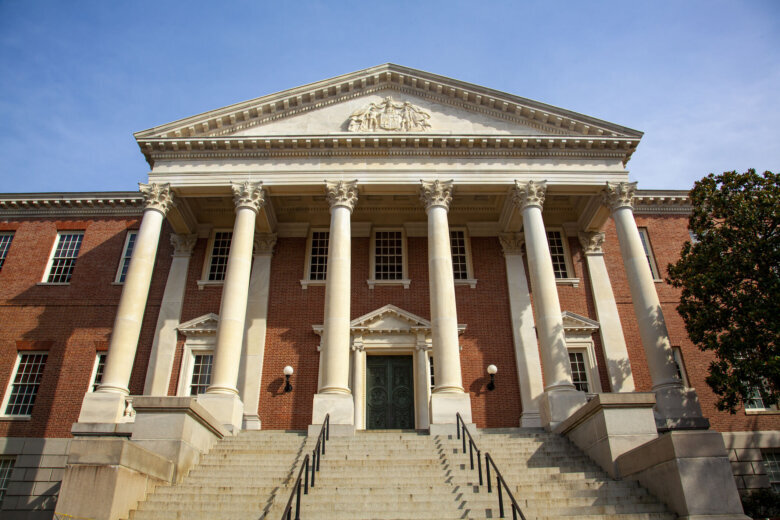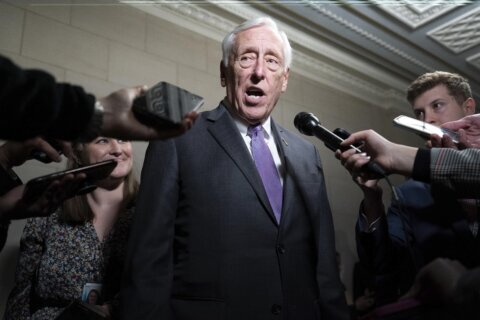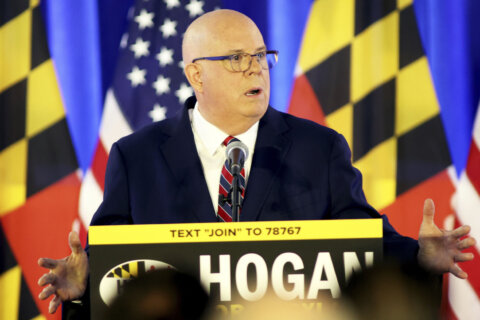
ANNAPOLIS, Md. (AP) — Raising revenues, rather than deep state budget cuts or relying on rainy day reserves, would likely be the least disruptive way of addressing future Maryland budget deficits, a leading state budget expert said at a budget hearing Tuesday.
Maryland lawmakers, who are approaching their second legislative session in a four-year term, are weighing how to address rising budget shortfalls in the future that are largely being caused by increasing costs of an education funding law known as the Blueprint for Maryland’s Future.
The state has been able to make investments and put added money into its rainy day fund in recent years with the enormous help of federal money to help states recover from the COVID-19 pandemic. States are now adjusting without such aid.
David Romans, coordinator of fiscal and policy analysis at the Maryland Department of Legislative Services, briefed lawmakers in fiscal panels in both the House and Senate on projected revenues Tuesday. The state’s cash and structural budget shortfall is forecast to grow from about $413 million in fiscal year 2025 to about $2.2 billion in fiscal year 2028.
The primary reason for the big jump is that K-12 education costs will be borne by the state’s general fund to a much greater degree in prior years, as the implementation of the blueprint continues to grow.
“So, the bottom line is by fiscal ’29, we only have revenues to cover about 93% of the projected spending, so it’s a significant structural challenge,” Romans said. “This is one of the larger challenges we’ve seen in some time.”
To illustrate the magnitude, Romans said trying to solve the entire shortfall in fiscal year 2029 with revenues would be equivalent to increasing income tax revenues by 12%, or raising the sales tax revenues that go to the general fund by about 30%.
Del. Stephanie Smith, a Baltimore Democrat, said during the hearing that the state faced three choices: aggressive budget cuts, tapping into the state’s rainy day fund, or deciding to “not forgo a conversation about getting the resources we need in the next session to ensure that we have the funds we need in the outlying years for the big bold commitments we’ve made to the people of Maryland.”
When Smith asked Romans what he believed the least disruptive option would be, he said, “certainly a revenue solution is probably the least disruptive, because it would give you stability.”
“I think probably the least disruptive, from a programmatic standpoint, would be the revenue option,” Romans said. “I think the rainy day fund is the least helpful, because it leaves everyone uncertain about the future, whether it’s cuts or, you know, revenues.”
The implementation of the Blueprint for Maryland’s Future, which is being phased in, has been a top priority for the Democratic-controlled Maryland General Assembly. The blueprint focuses on expanding early childhood education, increasing teachers’ salaries, and providing aid to help struggling schools adequately prepare students for college and careers.
During his presentation, Romans noted there were some short-term strategies to help balance the budget. For example, he noted that Gov. Wes Moore’s capital improvement plan last year assumed a substantial amount of general fund money would support capital projects in fiscal year 2025 through 2029. Romans said some of those costs could be shifted to bonds to provide some general fund relief.
Romans also pointed out that revenue forecasts leave 10% in the state’s rainy day fund, which adds up to about $2.5 billion. Still, he noted, that would not help address the larger future problem.
Lawmakers will convene Jan. 10 for their annual 90-day legislative session.
Copyright © 2024 The Associated Press. All rights reserved. This material may not be published, broadcast, written or redistributed.








